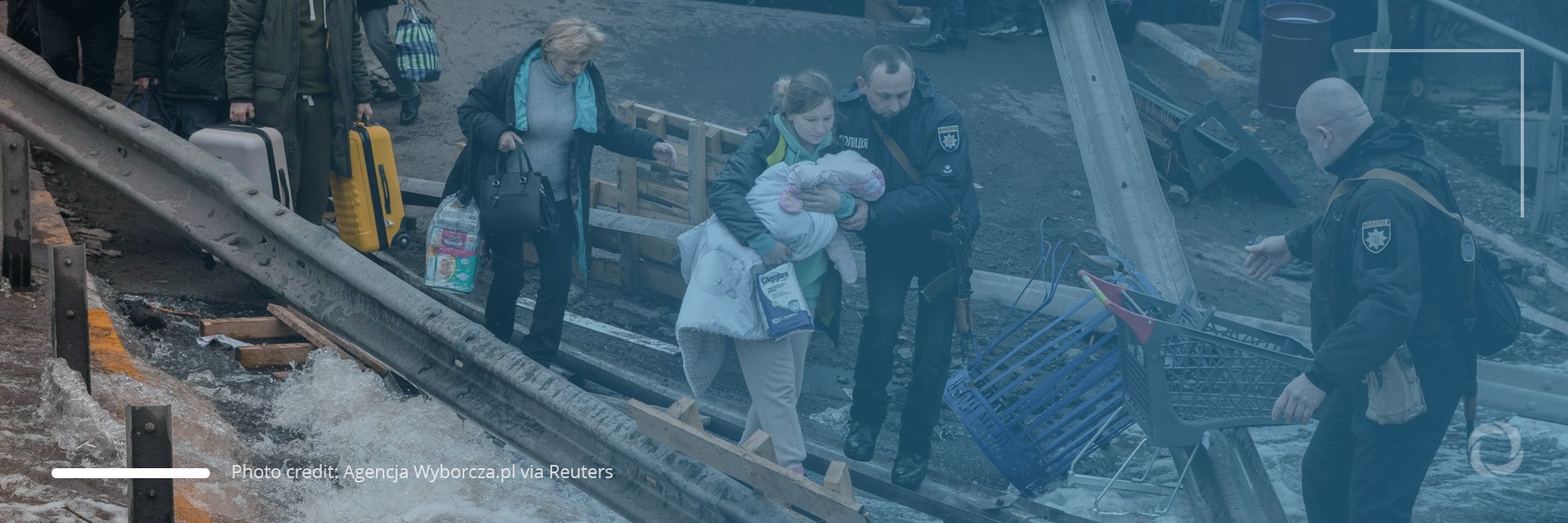Government authorities, local partners, and NGOs have been mobilizing resources and asking for help to assist those people affected by the ongoing military conflict in Ukraine. As the number of Ukrainians fleeing the war-stricken country has constantly been on the rise since the beginning of the conflict on 24 February, the amount of aid needed is expected to reach huge figures.
Recently, EU officials projected that the number of refugees from Ukraine may exceed 5 million which would make this the worst refugee crisis in Europe in decades. Although many countries and organizations have pledged financial aid, so far only a small amount has actually been offered.
UN appeals for US$1.7 billion in needed aid
The UN Office for Coordination of Humanitarian Affairs has launched an appeal to raise US$1.7 billion in funding to support the 12 million people who are expected to need assistance inside Ukraine and the 4 million who may need assistance outside the country. Of this amount, US$1.1 billion is urgently needed to help 6 million people inside Ukraine for the first three months.
UN humanitarian chief Martin Griffiths urged solidarity and compassion “to protect the life and dignity of ordinary Ukrainians”.
“Families with small children are hunkered down in basements and subway stations or running for their lives to the terrifying sound of explosions and wailing sirens. Casualty numbers are rising fast. This is the darkest hour for the people of Ukraine. We need to ramp up our response now.” he said.
Assistance offered
In the first days of the military conflict, in order to meet urgent needs in Ukraine, the UN Central Emergency Response Fund (CERF) allocated US$20 million. The CERF funding allows humanitarian operations in Ukraine and bordering countries to be scaled up to host families from war-affected areas. A further US$18 million was contributed by the Ukraine Humanitarian Fund (UHF).
As much as US$5.6 million was available under the UN’s Ukraine Humanitarian Response Plan 2022 which had been accumulated before Russia’s invasion. The main contributors of this were Germany with US$3.4 million funding, followed by the Netherlands with US$1.1 million funding.
Ukrainian Red Cross volunteers have been assisting Ukrainians in war-affected cities and areas. The agency supports individuals with disabilities during the evacuation process and provides first aid training to those people hiding in metro stations and bomb shelters. So far, according to the agency, more than 90,000 food and hygiene parcels have been distributed to people affected by the war.
Spain has already shipped 20 tons of medications and medical items to Ukraine worth over €150,000 following a request from the Ukrainian government. During the delivery of the shipment, the Minister of Foreign Affairs, José Manuel Albares, expressed his deep condemnation of the aggression, adding,
“Spain, as a people with strong roots in solidarity, is extraordinarily sensitive to the deep suffering of the Ukrainian population.”
Pledged assistance
CARE International, in collaboration with People in Need, has pledged to deliver emergency supplies including foodstuff, water, hygiene items, and cash to meet daily needs. The European Union has announced that €500 million from the EU budget will be allocated to deal with the humanitarian crises in Ukraine with €90 million emergency aid intended to cover Ukrainians’ basic needs such as food, water, healthcare, and shelter. In addition, the Commission, through its Civil Protection Mechanism, has organized the transfer of 8 million vital medical care and civil protection items.
The United States of America has announced about US$54 million in extra humanitarian assistance for Ukraine to be delivered through the U.S. Agency for International Development and the U.S. Department of State. The assistance includes foodstuff, drinking water, shelter, emergency healthcare items, and winterization services.
The International Monetary Fund (IMF) has stated that it was considering providing emergency funding to Ukraine through the Rapid Financing Instrument expected to be announced this month. Moreover, under Ukraine’s Stand-By Arrangement program, the IMF was considering making an extra US$2.2 billion available before the end of June this year.
For its part, the World Bank Group plans to deliver a US$3 billion package of support during the next few months and on 7 March approved a supplemental budget support package for Ukraine worth US$723 million. According to a communique by the WB, the money is expected to be used to “help the government provide critical services to Ukrainian people, including wages for hospital workers, pensions for the elderly, and social programs for the vulnerable”.
Since 2014, when Ukraine faced territorial conflicts in its eastern regions, the European Union has allocated around €193 million in humanitarian aid to support displaced and conflict-affected individuals from the eastern regions of the country. For its part, the U.S. has allocated about US$405 million to support communities affected by the conflict.
See also: 🔴 LIVE UPDATES | Humanitarian response to Ukraine crisis

